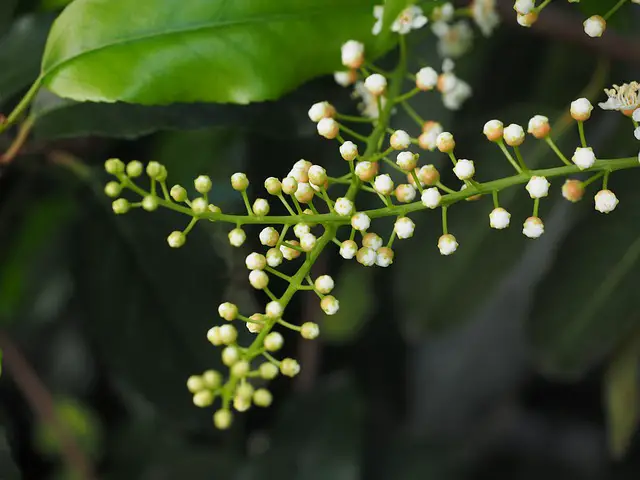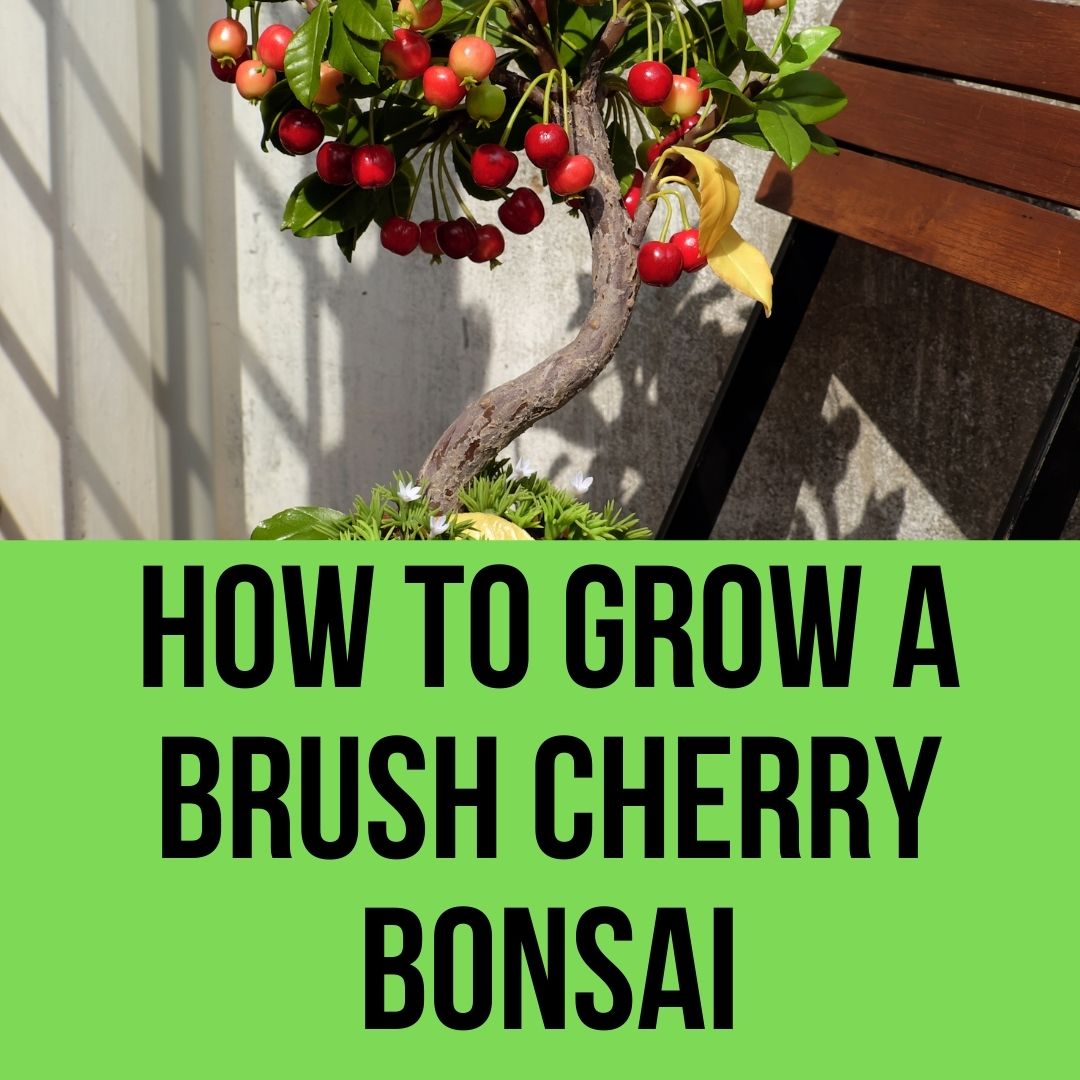If you are interested in growing ornamental trees as a hobby or to enhance the beauty of your home, growing bonsai is a great option. Anyone looking for detailed, beginner-friendly information about questions regarding bonsai, bonsai plantation, tips, growing method, aftercare, etc is welcome to read.
In this article, you will know how to grow a Brush Cherry Bonsai & some other questions about it as well.
Bonsai, Amelanchier Canadensis
Bonsai is a tree grown in a small container and it’s usually pretty small in size but it gives off the impression of a fully matured tree. Bonsai is not a unique species of tree. But its specialty lies in the fact that any woody-stemmed tree can be grown in bonsai form. It’s really like an art form with its aesthetic appearance and details required for achieving the perfect outcome.
The name ‘Bonsai’ has a Japanese origin and by definition, it means ‘tray planted’. It was first originated in China thousands of years back from now. Even though the numbers and opportunities of growing any bonsai are endless today only a special one will be discussed.
Brush Cherry Bonsai
Syzygium bonsai or Euginia Myrtifolia commonly known as Australian Brush Cherry Bonsai has small but firm and evergreen leaves. Endemic to Australia and New Zealand brush cherry can grow anywhere between 7 feet (2m) to up to the height of 80 feet(25 m) long in the wild. But their bonsai versions are much smaller. Small white puffy flowers are seen in them in spring and by autumn ripe red fruits come in full display. Birds are the biggest consumer of these fruits.
Brush cherry bonsai is grown through the root restriction of a normal brush cherry tree. As the tree does not have branches and lacks a cambium layer, the trimming of the root has been made the easiest process for growing it.
Grow a brush cherry bonsai
Now we will tell you exactly how you should commence growing a healthy brush cherry bonsai.
Propagation
Brush cherry bonsai can be propagated from commerces i.e, seeds, budding, grafting, and slightly woody cutting.
Placement
Brush Cherry Bonsai seems to prefer warm and sunny places over shady ones but in the case of extremely hot surroundings, partial shade is encouraged. They shouldn’t be kept out outside fully exposed to the sun as it can burn the delicate blooms.
Similarly, they shouldn’t be kept outside when the temperature goes below 30 degrees. During wintertime, they can be kept in a greenhouse. Though compared to other bonsai plants brush cherry has impressive adaptation levels but they don’t do very well when the temperature is shifted a lot. They should never be kept in drafts or positioned on a heat source.
Soil
Generally, commercially available bonsai soil is best in case of best for the cultivation of this plant as these soil are designed exactly according to bonsai needs. But the thing that’s the ultimate goal while preparing the soil for bonsai is to accommodate adequate drainage. A pH value of 5.5-6.5 is recommended as cherry bonsai seems to thrive on slightly acidic soil.
Fertilization
Even though it’s common knowledge that all trees require proper plantation to grow but it’s a bit more crucial in the case of bonsai trees as they are grown in a small amount of soil. It’s important to replenish the soil with necessary nutrients every two weeks, especially the young ones. But even the mature ones are to be fertilized at least once a month.
Watering
The most significant part of brush cherry bonsai culture is watering the trees regularly. How one waters the plant doesn’t matter much but it should be water plenty of times and it has to make sure that the soil never completely dries out.
Using a moisture meter has proven to be useful to get to know about the nutrients present and required in a tree but other than that the best way to know when to water is when you see water dripping down from the bottom holes of the container.
Humidity
Providing extra moisture during the cold months is very crucial. It’s recommended to transfer the plant in a shallow tray filled with just a layer of gravel. And watering should be adequate.
It’s important to remember that even though these trees can tolerate mild frost but they should be saved from intense frosting at all costs.
Pruning
Pruning regularly is important for the health of bonsai but it should be done only after the tree is done blooming usually during the summertime.

New stems should be pinched back to enhance the overall shape. The stems should be reduced to 2-3 leaflets. It also encourages branching more. But the main branches shouldn’t be trimmed before winter. The new shoot should never be fully removed as it hampers the perennial blooming. Pruning should be inhibited by the end of April.
Bonsai pots
As cherry bonsai usually serve the purpose of enhancing the ambiance of people’s homes using a glazed pot is ideal. As they aren’t for the outdoors frost resistant ones are not required. But pots with enough drainage should be prioritized.
Wiring
These bonsai plants can be wired but they provide the best results in their shape mainly due to pruning. And the wiring is prohibited immediately after repotting. These plants scar easily so wiring shouldn’t be done too tight. For removing the wire it should be cut carefully and unwinding is restricted as both of these might result in breaking branches.
Repotting
Repotting the plants with a periodic regularity is important. As it provides fresh soil with the necessary supply of nutrients, encourages a solid root system, restricts unsolicited root outgrowth, etc. The younger ones should be repotted every two years and the older ones can be done once every three to five years. Early to mid-spring is a good time for it.
As per the rules of bonsai, a pot’s length and girth should not be more than ⅔ that of the tree, both for the function of root restriction and aesthetic purposes.
70% Akadama to 30% Kanuma can be mixed to prepare the ideal acidic soil for repotting. Other than that azalea soil available commercially can be used. After repotting the tree should be watered thoroughly but fertilization should be avoided for at least 3-4 weeks.
After Repotting a cherry tree bonsai, make sure that it is kept in a partially sheltered area until the tree becomes firmly rooted. Newly repotted cherry tree bonsai are especially susceptible to over-exposure if kept in open.
Insects and disease infestation
Like any other tree brush, cherry bonsai are also prone to pest infestation. The main suspects are scale, mealybug, mites, caterpillars, Caribbean fruit fly, aphids, & red spider. Spraying with Non-toxic insect spray every few months is encouraged. But never spray while the soil is dry.
Although it’s very rare but keep an eye out for diseases such as peach leaf curl, blossom wilt, and tapering Wiesner.
Frequently asked Questions
Is dwarf culture and bonsai culture implying the same thing?
Bonsai culture is commonly mistaken for dwarf culture. But there’s a basic difference between the two cultures. While dwarfing requires genetic engineering, discovery, and research work to be done successfully, bonsai culture usually just depends on a special way of plantation and nurturing.
How many species of brush cherry bonsai are there?
There are two species of this tree. Syzygium paniculatum and Syzygium Australe from the evergreen Myrtaceae family of plants.
Which is a common insect infestation and how to identify it?
Scale is the most common suspect of insect infestation in them and it can be easily detected by black and brown bumps on the branches.
Is brush cherry edible?
Yes, Brush Cherry is edible. But it’s mostly consumed by birds.
Does brush cherry bonsai flower?
Yes. Their flowers are small puffy and white.
What are the absolute don’ts with Brush Cherry Bonsai?
Do Not Position Near A Heating Source Or In Drafts. Avoid putting your Bonsai near a draft or heating/air conditioning vent which dries out the foliage.
- Do not fertilize a weak or freshly repotted tree!
- Do not wire a bonsai just after repotting.
- Do not fertilize for 3-4 weeks.
- Do not spray when soil is dry
Conclusion
Taking care of this bonsai is no sweat. Cherry myrtle is one of the most uncomplicated bonsai for beginners and can also be cared for e a Mediterranean bonsai. As they are tolerant to multiple climatic conditions, this tree doesn’t require rigorous caring. So they make for a beautiful companion to brighten the ambiance of your home.
